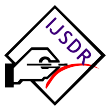Imp Links for Author
Imp Links for Reviewer
Research Area
Subscribe IJSDR
Visitor Counter
Copyright Infringement Claims
Indexing Partner
|
Published Paper Details
|
|
| Paper Title: | Parametric Optimization for Tensile Strength and Hardness of MIG Welding Joint of Dissimilar Steel Alloys Using Taguchi Technique |
| Authors Name: | Prashant Kumar , Pratik Vashisht |
| Unique Id: | IJSDR2107046 |
| Published In: | Volume 6 Issue 7, July-2021 |
| Abstract: | This paper explores the Welding process of joining metals Which are similar and different in composition, using a filler rod and with or without the use of pressure. During the welding process, metals and thermoplastics are joined together. The most basic level of welding needs the application of four components, including metals, a heat source, filler metal, and some kind of air barrier, to be successful. Heat is applied to the metals to bring them to their melting temperatures while keeping them shielded from the air. A filler metal is then introduced into the heated area to form a single piece of metal. In both domestic and industrial applications, the welding method is extensively employed, for example, in the connecting of railroads and ships, as well as the construction of roads and bridges, and in the assembly of mechanical components. The brazing and soldering processes are similar to the welding process in their results. When it comes to MIG welding stainless steel 202 and stainless steel, a selection of three factors was used in this study, including soldering current, soldering voltage, and gas flow rate. The need for selecting these three parameters is only due to the fact that these three variables have the greatest influence on the geometry of the solder bed. The investigation is carried out with the help of nine components. The orthogonal array L9 (3*3) is used in this design, which is based on the Taguchi design. For tensile strength, it was discovered that the highest soldering voltage has the greatest effect, followed by the lowest soldering current and the slowest gas flow rate. Hardness is influenced by many factors, the most significant of which is the gas flow rate, which is followed by soldering current and soldering voltage. It is very beneficial in the creation of high-quality products to use the Taguchi method. We are unable to handle the many design elements without the assistance of human judgments, and doing so would be very time consuming and expensive. |
| Keywords: | Parametric Optimization, Tensile Strength, MIG Welding, Steel Alloys, Taguchi Technique |
| Cite Article: | "Parametric Optimization for Tensile Strength and Hardness of MIG Welding Joint of Dissimilar Steel Alloys Using Taguchi Technique", International Journal of Science & Engineering Development Research (www.ijsdr.org), ISSN:2455-2631, Vol.6, Issue 7, page no.290 - 295, July-2021, Available :http://www.ijsdr.org/papers/IJSDR2107046.pdf |
| Downloads: | 000337212 |
| Publication Details: | Published Paper ID: IJSDR2107046 Registration ID:193532 Published In: Volume 6 Issue 7, July-2021 DOI (Digital Object Identifier): Page No: 290 - 295 Publisher: IJSDR | www.ijsdr.org ISSN Number: 2455-2631 |
|
Click Here to Download This Article |
|
| Article Preview | |
|
|
|
Major Indexing from www.ijsdr.org
| Google Scholar | ResearcherID Thomson Reuters | Mendeley : reference manager | Academia.edu |
| arXiv.org : cornell university library | Research Gate | CiteSeerX | DOAJ : Directory of Open Access Journals |
| DRJI | Index Copernicus International | Scribd | DocStoc |
Track Paper
Important Links
Conference Proposal
ISSN
 |
 |
DOI (A digital object identifier)
  Providing A digital object identifier by DOI How to GET DOI and Hard Copy Related |
Open Access License Policy
Social Media
Indexing Partner |
|||
| Copyright © 2024 - All Rights Reserved - IJSDR | |||






Facebook Twitter Instagram LinkedIn